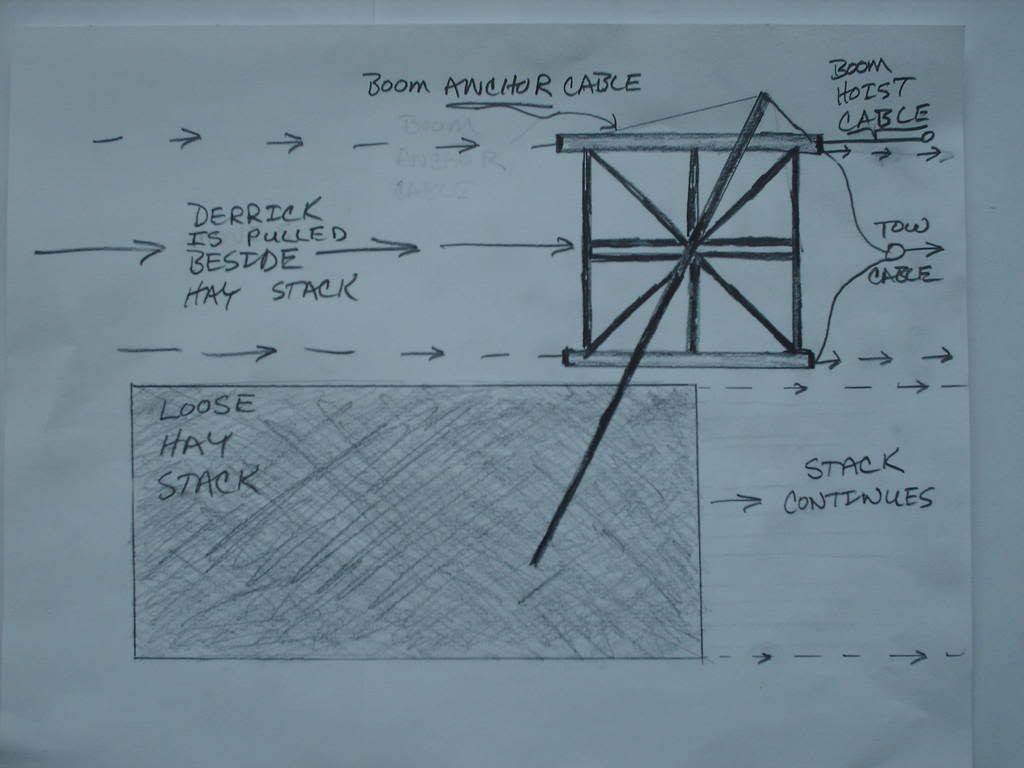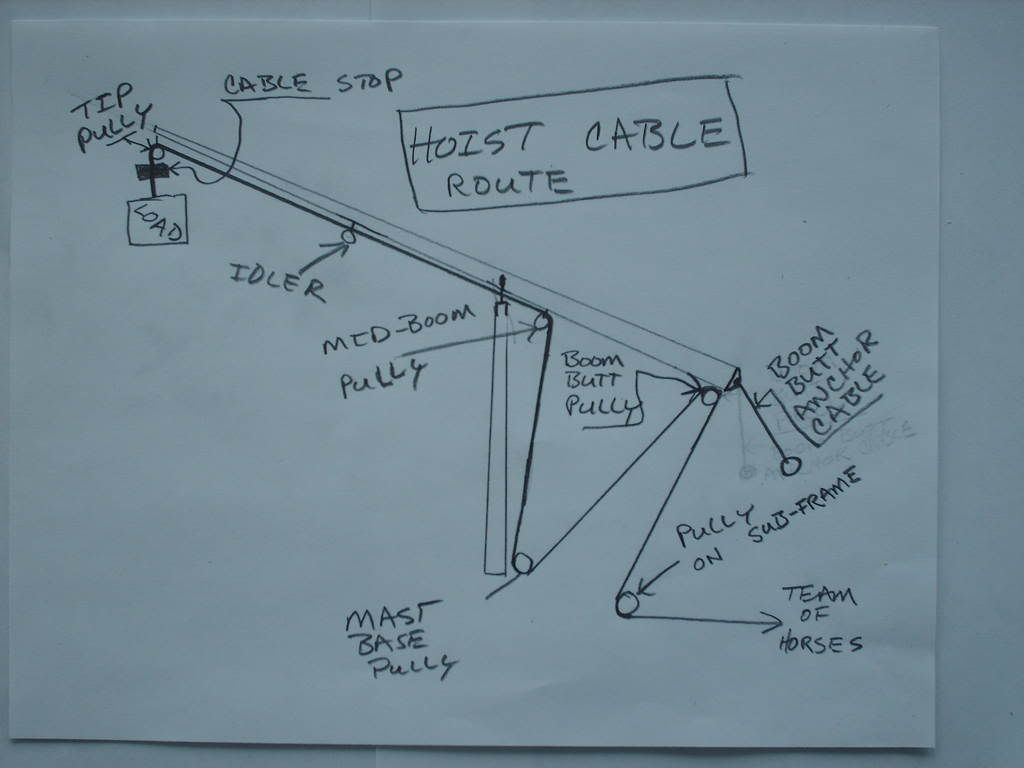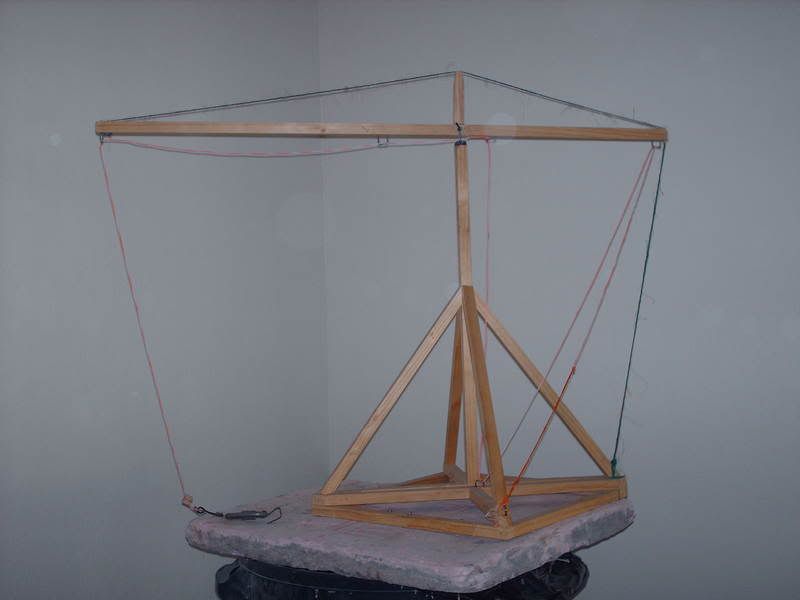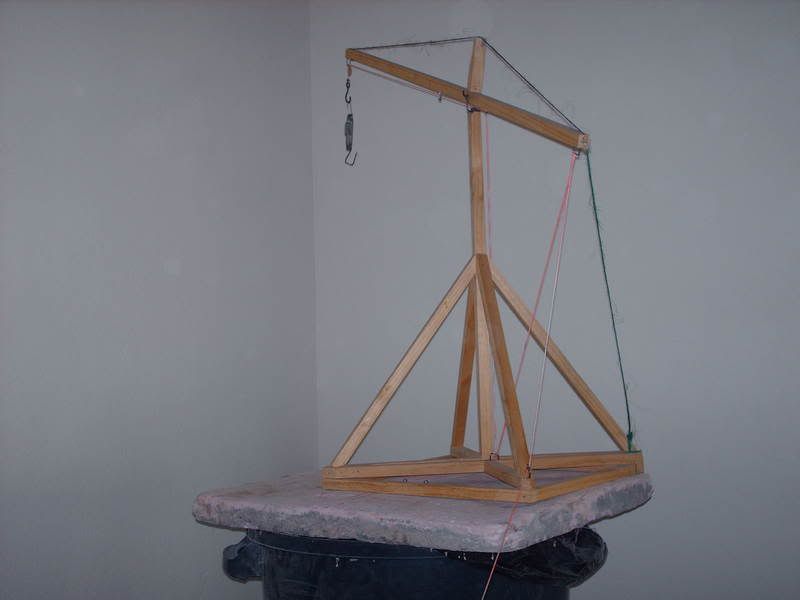Hello Jim, Derick. Yes I have lots of drawings. I haven't kept any pictures because most derricks around here are in pretty bad condition.
I'll start with form and function so everyone can see how it worked. After that nomanclature, 'cause I'm not to sure about what to call each piece.
These machines were not designed to move long distances over rough ground. I think mostly they were left in a stack yard and just pulled around as necessary to complete the hay stacks.
You see in the top right of the first drawing, the Boom Hoist cable. That's where the team of horses is hooked. At the top center; the Boom Anchor Cable is a static line from the boom butt to the skid log on the frame. Its function is to index the boom to the same start position under no load conditions.

This second drawing shows the hoist cable route. The machine should always be tip heavy. That is the CG of the boom is forward of the mast/boom-hinge/swivel. The condition drawn shows the load at full height and max rotation. Under a no load conditon the boom would index to level horizontaly because the boom butt anchor cable is approx the same length as the mast height. Now glance back to the first drawing, if the boom was in a no load position the boom butt cable would be straight up and the boom would be pointing toward the words 'stack continues'.

These two photos are of a scale model. The first shows the machine in a no load conditon and the second shows max lift and rotaion. These pic's demonstrate the relationship between mast height, base dimensions, max elevation and max rotation. Note the triangle formed between the hoist cable , the boom butt anchor cable and the skid log that both are hooked to. A small base/tall mast means less height and rotatoion because the two vertical elements of the triangle are longer than the base, but you can get the mast/boom close to the stack. A large base/short mast means more rotation/elevation but you can't get the mast/boom as close to the stack.


Hay was hauled by wagon or bucked to the stack and positioned in front of the stack. The Derrick used an over-center dump basket (jackson fork) to lift the hay up over the stack where it was dumped and moved around by hand (men on top of the stack) as necessary to keep the stack square. When a load is hooked up and the hoist cable pulled, most of the force goes into lifting the load and just a little into rotaion. When the cable stop hits the tip pully that freezes the cable in all pullys except the boom butt pully and the boom rotates and elevates to get the load over and above the stack. When a section of the stack was completed the Derrick was moved forward and the stack continued.
That's a very brief outline of the machines basic operation. Any questions? Next is nominclature.
Thanks Idaho